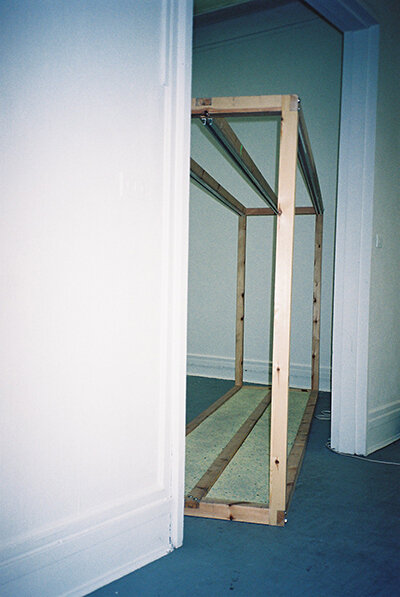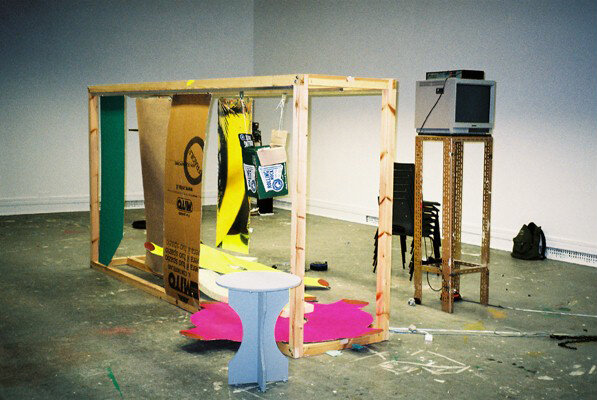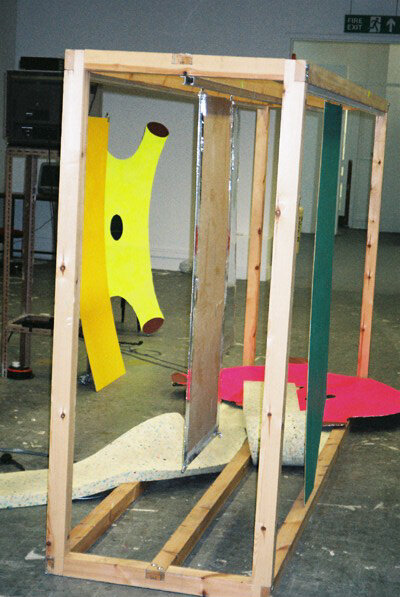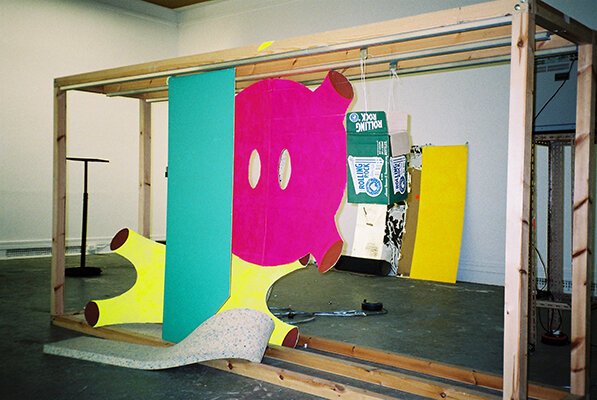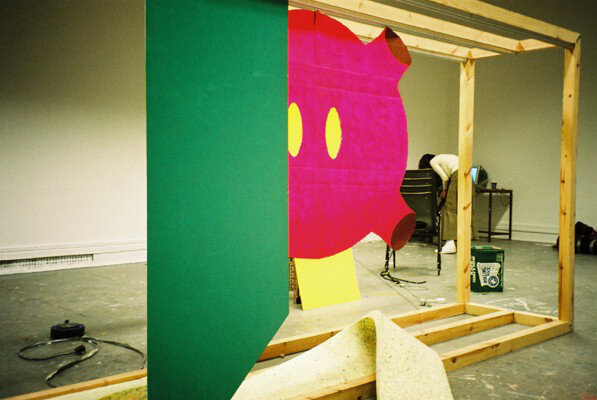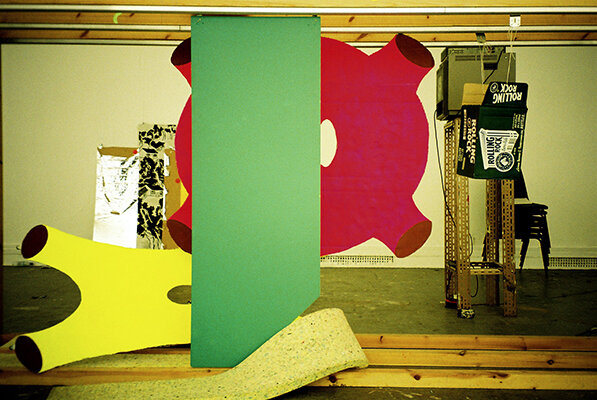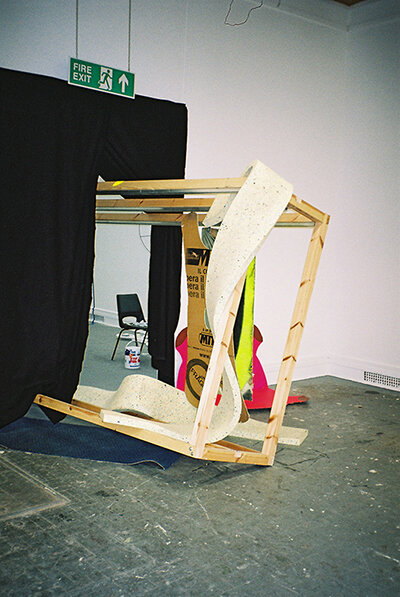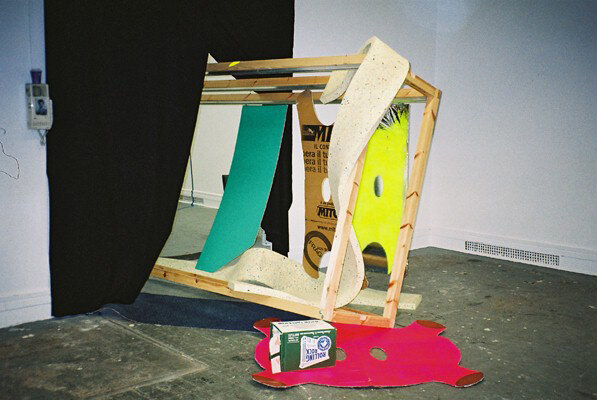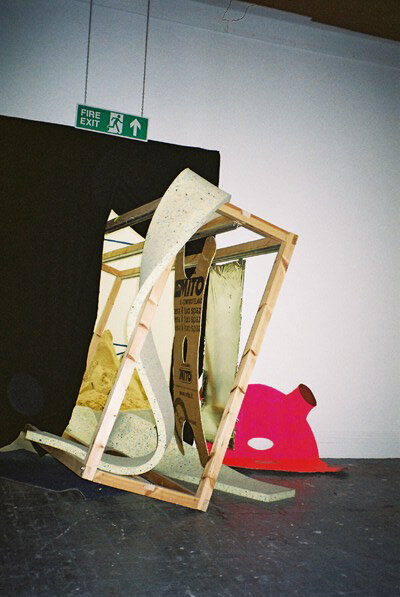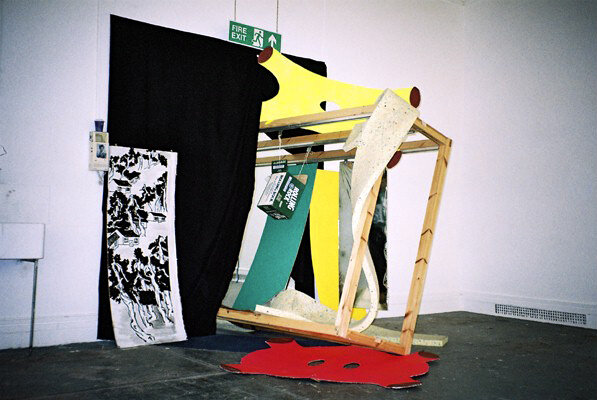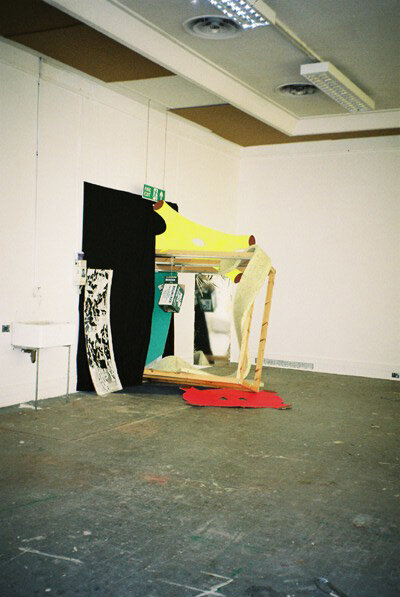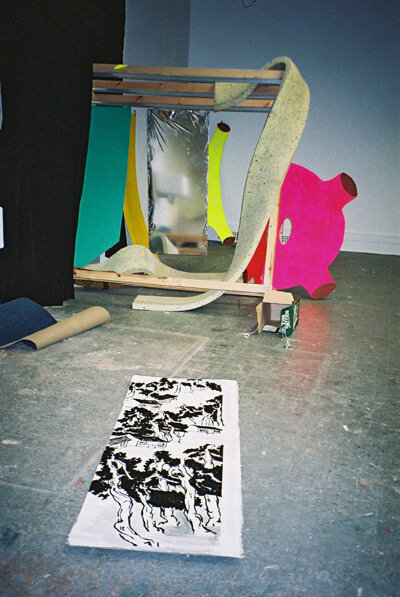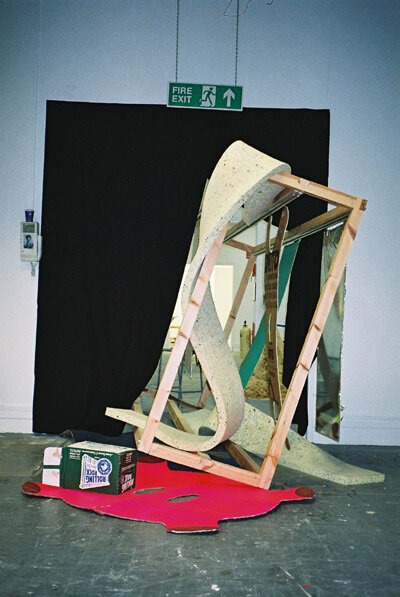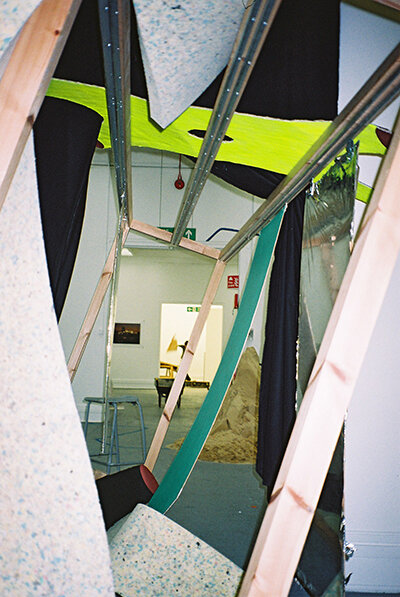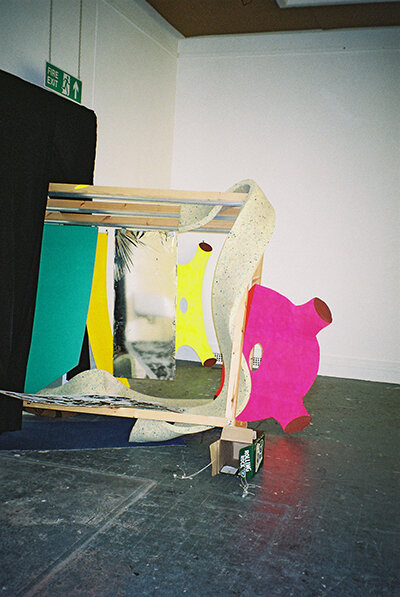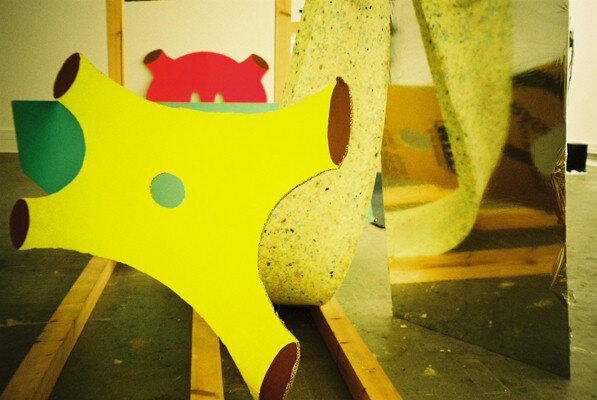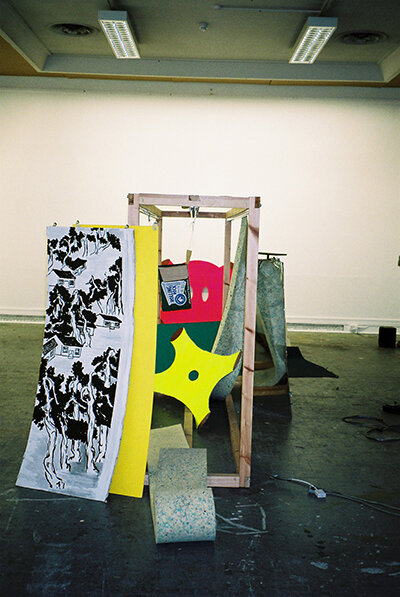Anger as a creative gesture - Epiphanies
Using anger as a creative gesture
Reflecting on the process of art making and how art can heal. Listened to a presentation by Shaun McNiff where he describes anger as a creative force or gesture: Doing something with the things that are resistant or hold fears. Letting go and trusting something will happen.
During the process leading to the work Sladonia, objects were held in a frame. Both they and I got fed up. A moment of anger ensued, a pathological state, where I shoved the whole thing through a doorway, liberating the forms. Perhaps in a similar way to the Fauvist dream of liberating colours from forms. The use of colour in my forms perhaps instigated this movement, released an energy, like wavelengths of light.
Sladonia
I took painterly elements from photographic reproductions of these forms and translated these representations back into space again through the shapes they have acquired through the perspective they have been photographed. A repeated cycle of the origins of the shapes from found scientific footage: 2D imagery into semi 3D installations, flat but in space.
Sladonia invites the viewer to pervade the pictorial elements that might make up space. Perception of the elements always changing, a dynamic process, everything in movement to show form. An active process.
Bohm and the hologram
Referring my work back to Bohm’s (1980) ideas of the hologram and how multiple perspectives are required to gain a wider understanding of reality. The whole in every part: in which a total order is contained, in some implicit sense, in each region of space and time.
If you cut up a hologram into smaller parts, each part will contain a smaller, fuzzier, but exact version of the whole picture. Combining many views of the object you may start to understand the object and reality further. But it is unlimited, like the amount of perspectives I could have photographed the forms.
I’ve recently bought a Holographic kit. I want to perceive how the pieces work as well, each piece containing the whole, from a given perspective.
Epiphanies
Reading this book was an epiphany for me during studying for my Master in Fine Art. During the first year I was struggling to open myself to new ways of working. Not only was the topic of interest to me, but it was the way the language and ideas were visualised pictorially that inspired me to create a new body of work (Sladonia). There are many books on the subject, but it was the visuals on the front cover that prompted me to select this book. I have since read several books covering a range of topics by the same author.
Peat, F. (1989). Superstrings And The Search For The Theory Of Everything. New York: McGraw-Hill Education.
World Tubes and the Implicate Order
Bohm (1980: 157) states that:
Relativity implies that neither the point particles nor the quasi-rigid body can be taken as primary concepts. Rather, these have to be expressed in terms of events and processes.
For example, any localizable structure may be described as a world tube (see Figure 1 - visualisation of a world tube). Inside this tube, a complex process is going on. It is not possible consistently to analyse movement within this tube in terms of 'finer particles' because these, too, would have to be described as tubes, and so on ad infinitum. Moreover, each tube is brought into existence from a broader background or context, while eventually it dissolves back into the background. Thus, the 'object' is an abstraction of a relatively invariant form. That is to say, it is more like a pattern of movement than like a solid separate thing that exists autonomously and permanently.
Figure 1
“Did you lop the top off that chair!? ”
[C]hairy sumac combined ideas over many years. By using anger as a creative force, lopping off the top of the chair was cathartic, yet a pre-determined idea in the work. A more controlled aggressive act, channelled into creative expression.



